
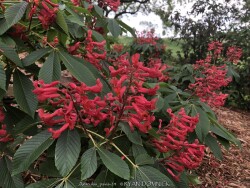

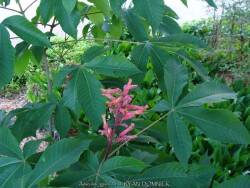
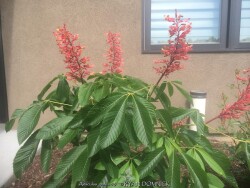



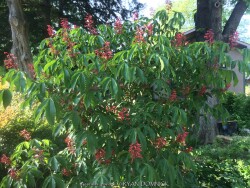
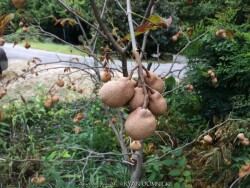
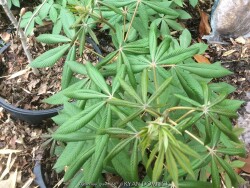
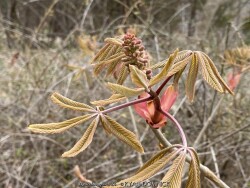
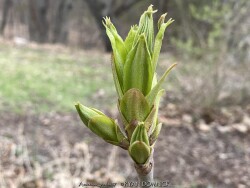
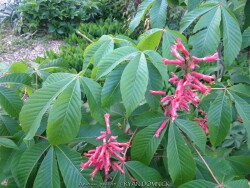
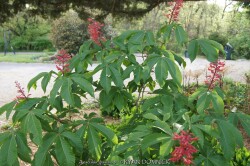
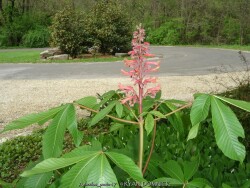
Plant Min Zone: 4b
Plant Max Zone: 9a
Sunlight: Part Sun, Shade
Water / Rainfall: Low, Average
Soil Quality: Average, Rich
Bloom Season: Spring
Flower Color: Red
Berry / Fruit Color: Brown-Beige
Spring Foliage Color: Green, Reddish Green, Maroon
Summer Foliage Color: Green
Fall Foliage Color: None: Dormant
Evergreen Foliage: No
Winter Interest: No
Scented Flowers: No
Drought Tolerance: Medium, High
Wet-Feet Tolerance: Low, Medium
Humidity Tolerance: High
Wind Tolerance: Low
Poor Soil Tolerance: Clay Soils, Rocky Soils
Height: 6' - 15'
Width: 6' - 10'
Growth Rate: Slow
Service Life: Extremely long: over 20 years
Maintenance Need: Low
Spreading Potential: N.A.
Yearly Trimming Tips: Selectively Prune into Small Tree Shape over Period of Many Years.
Plant Grouping Size: Specimen Planting of 1-3, Small Grouping of 3-5
Best Side of House: East Exposure, North Exposure
Extreme Planting Locations: None
Ornamental Features: Multiple Seasons of Interest, Long Blooming Season, Rot Resistant / Strong Wood Tree, Emerges Early in Spring, Easy to Eat Edibles, Large Tropical Foliage / Flowers
Special Landscape Uses: Naturalizing, Clean Street Tree
Possible Pest Problems: Occasional Problems, Disease
Plant Limitations: Susceptible to Late Spring Frosts, Unwanted Self-seeding, Slow to Reach Mature Size, May be Poisonous
Shippable in 2026: YES
Red Buckeye (Aesculus pavia) is a valuable small tree or shrub is native to the southern and eastern parts of the United States. Grow in average, medium moisture, well-drained soil in morning sun to full shade. In Kansas, growth is slow but flowers at a very young age when only a couple feet tall making it useful as a flowering shrub for the first 10-20 years. Then you can allow it to grow into a small tree. Tall ruby red flowers bloom for about a month close to redbud bloom timing and hummingbird migration back to the area. Attractive brown fruits are produced in August/September and are favored by squirrels as their first fall nut crop. Foliage is dropped rapidly making it one of the first shrubs or trees to drop its leaves sometimes as early as late September. This is rarely a problem though, as there are many other things happening in the garden in the fall.